|
|
|
GIANT VOICE |
|
|
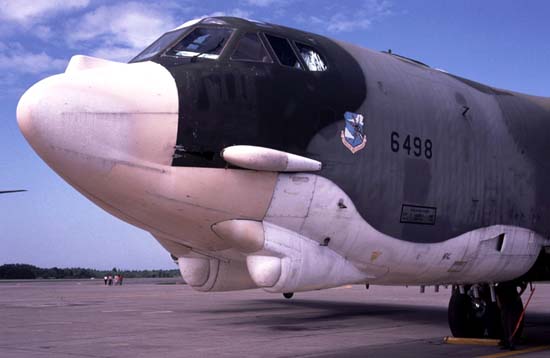 |
|
|
|
For nearly forty years, Strategic Air Command's
best crews gathered to participate in an annual SAC Bombing and
Navigation Competition called Giant Voice (later renamed Proud Shield)
in an effort to test skills and equipment under exacting conditions and
to build morale and sharpen the competitive edge of SAC's bomber and
tanker crews.
|
|
|
|
The Bombing and Navigation Competition had its
origins in the late 1940s when America's strategic air forces were in a
period of adjustment. Confronted with serious manning, supply and
administrative problems throughout its first two years of existence, the
Strategic Air Command (SAC) was unable to devote much time to bombing
practice. Seeing the bombing accuracy of their crews falling below
desired standards, SAC's first Commander General George Kenney decided
to hold a yearly bombing competition, called the SAC Bombing
Competition. The first competition was held at Castle AFB, CA during the
week of 20 thru 27 June of 1948. Ten B-29 groups participated each
represented by three crews. Each crew accomplished three visual bomb and
three radar releases from a 25,000 feet altitude. The 43d Bomb Group
from Davis-Monthan AFB won the first competition.
|
|
|
|
The SAC Bomb/Nav was next held in 1949, but in
1950, the Bomb Comp was cancelled because of the U.S. Air Force's
involvement in the Korean Conflict. The competition resumed in 1951 with
the addition of the first Royal Air Force Team flying B-29 Washington's.
In 1953, the first pure-jet bomber, the Boeing B-47 Stratojet made its
first appearance during the last competition for the B-29, 1956 the
first Boeing B-52 Stratofortress entered the contest. The 1959 SAC Bomb/Nav
was the first in which aerial refueling was added marking the first
appearance of the Boeing KC-135 Stratotanker. In 1960, SAC's first
supersonic bomber, the Convair B-58 Hustler took part in the contest.
Operational requirements
dictated the cancellation of the competition in 1962, 1963, 1964, 1967,
1968, 1972, & 1973.
|
|
|
|
In 1971 the competition was renamed "Giant Voice".
|
|
|
|
Giant Voice resumed in November 1974 at Barksdale
AFB, Louisiana. The 1975 Giant Voice competition was canceled and
replaced by a military exercise nicknamed "Operation High Noon".
Operation 'High Noon' served as a transition phase while SAC redesigned
the Giant Voice competition. General Dougherty had three primary goals
in reorganizing the 'Bomb Comp'. First, he sought to broaden
participation in the competition in order to give all crews a feeling of
participation in the 'Bomb Comp' progress. Secondly, he wanted to reduce
the costs associated with the 'Bomb Comp'. Finally, General Dougherty
sought to make the competition more meaningful by injecting more realism
into the competition missions. As such, the reforms of 1976 reflected
General Power's earlier efforts to transform the competition from a
bombing tournament into a realistic test of capabilities of SAC's best
bomber and tanker crews.
|
|
|
|
Electronic countermeasures became increasingly
important, as aircraft were required to evade and fend off "hostile" AAA
and SAM defenses. In 1978, simulated launches of Short Range Attack
Missiles (SRAM) were added to the competition. Each competition after
1978 included multiple simulated SRAM launches as well as the
traditional high and low-level bombing. In 1979, an entirely new
dimension was added when Air Defense Tactical Air Command (ADTAC)
interceptors were sent to 'shoot down' the bombers during the
competition. Now, SAC crews had to try and evade live opponents on their
way to their appointed targets. Even greater realism was added in 1984
when SAC began to hold part of the competition over the Nellis AFB 'Red
Flag' bombing range which permitted competition aircraft to drop inert
weapons for the first time in many years. It also provided a more
challenging environment as bomber crews attempted to avoid a barrage of
simulated anti-aircraft fire, surface-to-air missiles and NORAD
interceptors.
|
|
|
|
The competition was renamed "Proud Shield" in
1987.
|
|
|
|
SAC held the last Bomb Comp in 1992, Air Combat
Command conducted one Bomb Comp in 1994. In 2009, Eighth Air Force
revived the tradition with a limited Bomb Comp that included five bomber
wings and three airframes (B-1, B-2, & B-52).
|
|
|
|
(INFORMATION COURTESY OF THE McCHORD AIR MUSEUM) |
|
|
|
|
|
318TH AT "GIANT VOICE" |
|
|
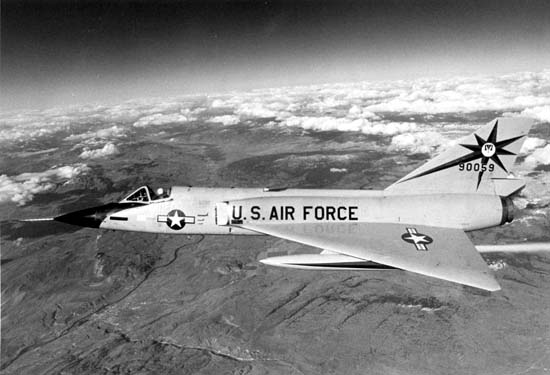 |
|
F-106A 59-0059 is pictured wearing "kill" marks from Giant Voice
1979, where the 318th FIS won the Top Interceptor Team award.
|
|
|
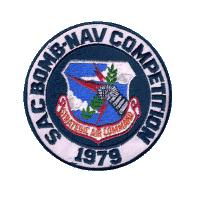 |
|
|
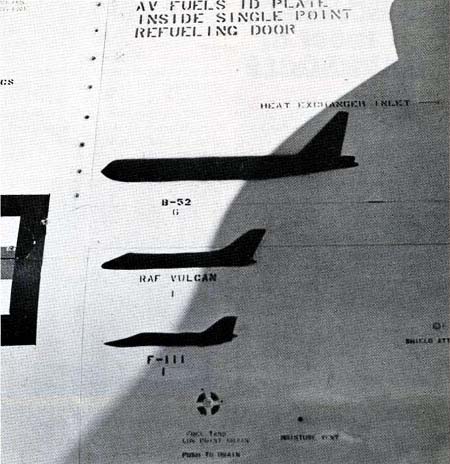 |
|
The kill marks carried on F-106A 59-0059 indicate six Boeing B-52s,
one Arvo Vulcan B.2, and one General Dynamics FB-111, all killed during
Giant Voice '79.
|
|
|
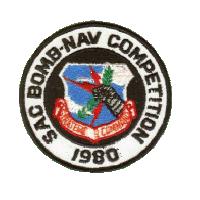 |
|
|
|
REITZAG AND 318TH FIS SCORE IN
|
|
GIANT VOICE '80 |
|
NORTHWEST AIRLIFTER - NOVEMBER 21, 1980 |
|
|
|
"Team work, it's the only way you can do things like this, " said Maj
Norman L. Komnick, a member of the 318th Fighter Interceptor Squadron
who recently returned from the air defense competition during "Giant
Voice."
|
|
|
|
Major Komnick was referring to the units winning the air defense
competition at the annual event, hosted by the Strategic Air Command.
This year's competition was held at Peterson AFB, Co Nov 4-5. Capt. Hal
Reitzig, one of the two F-106 pilots from the 318th who took part in the
event was awarded "Top Gun" for a perfect score. Two SAC B-52 bombers,
two Vulcans (British Bombers) and one FB-111 penetrated the Captain's
zone of defense and he successfully intercepted them.
|
|
|
|
Giant Voice consisted of both bombing and navigation competition and
involved bombers flying through a hostile area patrolled by Tactical Air
Command fighters. The fighters flew out of Peterson AFB and operated in
conjunction with the Airborne Warning and Control System to defend their
area of assignment. When a bomber was detected, a fighter was dispatched
to intercept it. The competition helped both SAC and TAC crews to home
their combat skills in a simulated hostile environment.
|
|
|
|
The 318th FISs Giant Voice team consisted of the following people: Major
Komnick, Capt. Harold P. Reitzig, Merlin Hatch, TSgt Ernest G. DeBella,
SSgt Daniel K. Lewis SrA. Jerry D. Atencio and A1C. Mark J. Thell. The
318 took top honors last year also, in the first Giant Voice Competition
(with ADTAC). Captain Reitzig said that "It was a testimony to what the
F-106 can do. It was built as specifically as an interceptor 23 years
ago and today it is still doing its job outstandingly." The Captain
stressed that the maintenance people who accompanied the team did a
great job in supporting them by keeping the "Sixes" flying.
|
|
|
|
Capt Reitzig, who calls Palm Bach FL his home received his commission
April 4, 1974, from the Academy of Military Sciences, Knoxville TN. In
May of that year, he began pilot training at Reese AFB, TX. His rated
career began whit the 134th Defense Evaluation Squadron. He was assigned
to the 318th FIS in 1979 and is an instructor (pilot) in the F-106 and
assistant weapons training officer.
|
|
|
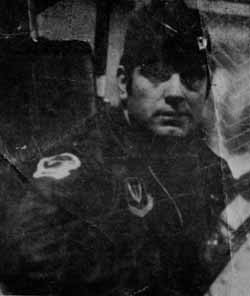 |
|
Captain Hal Reitzag in his F-106 |
|
|
|
|
 |